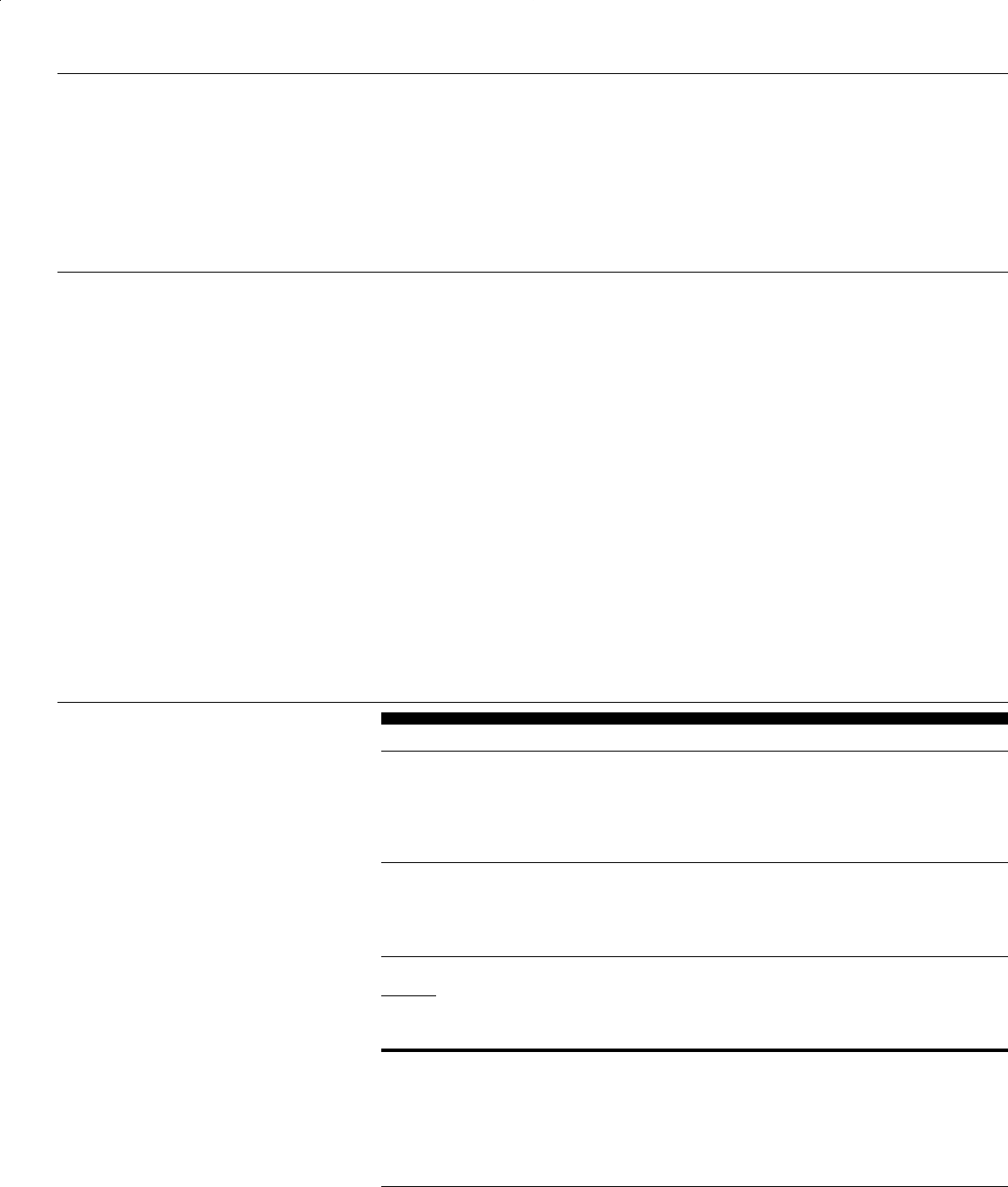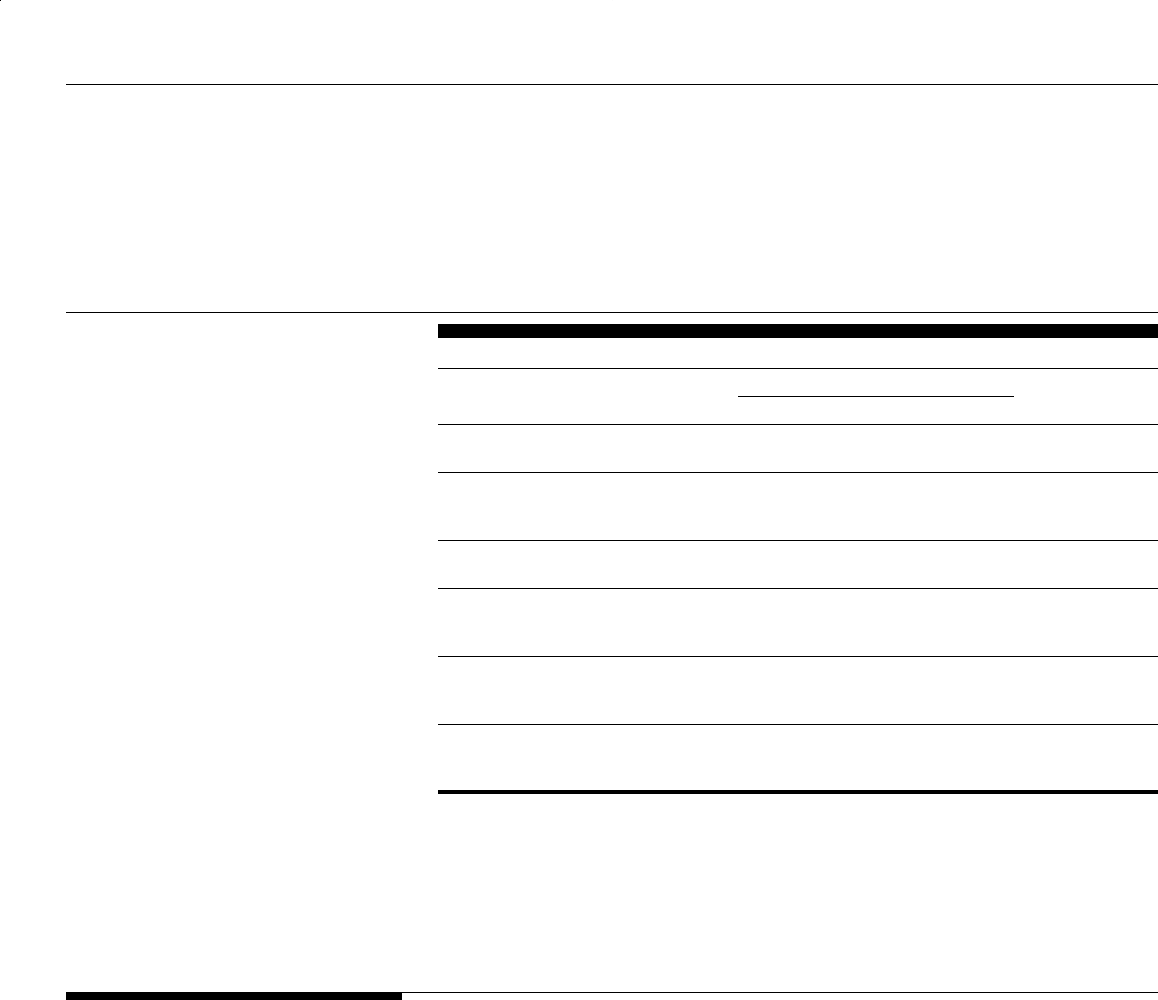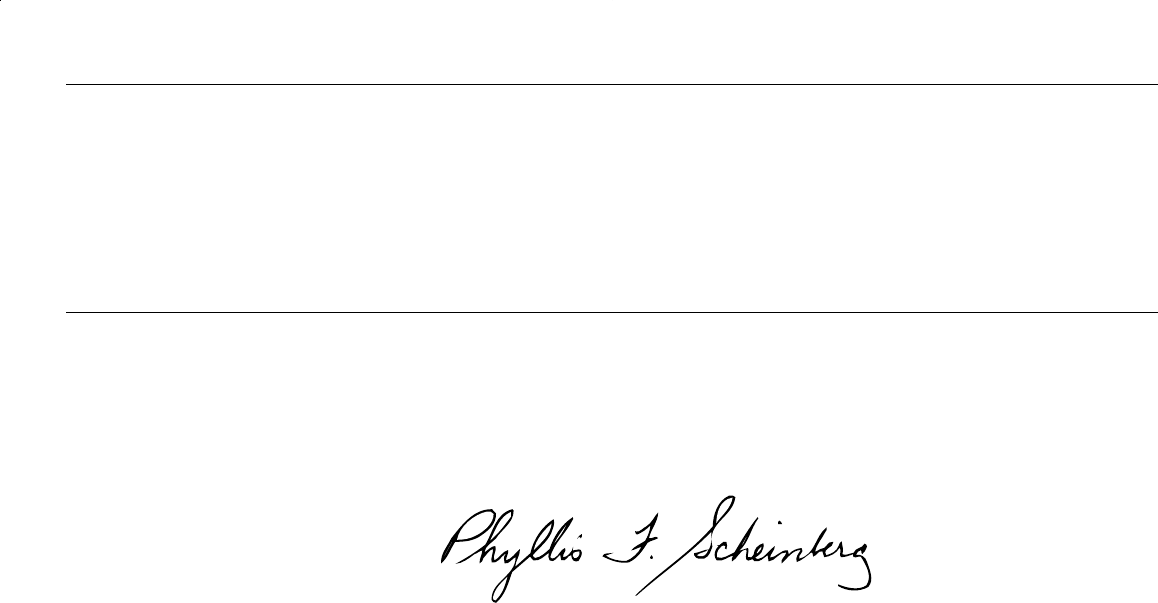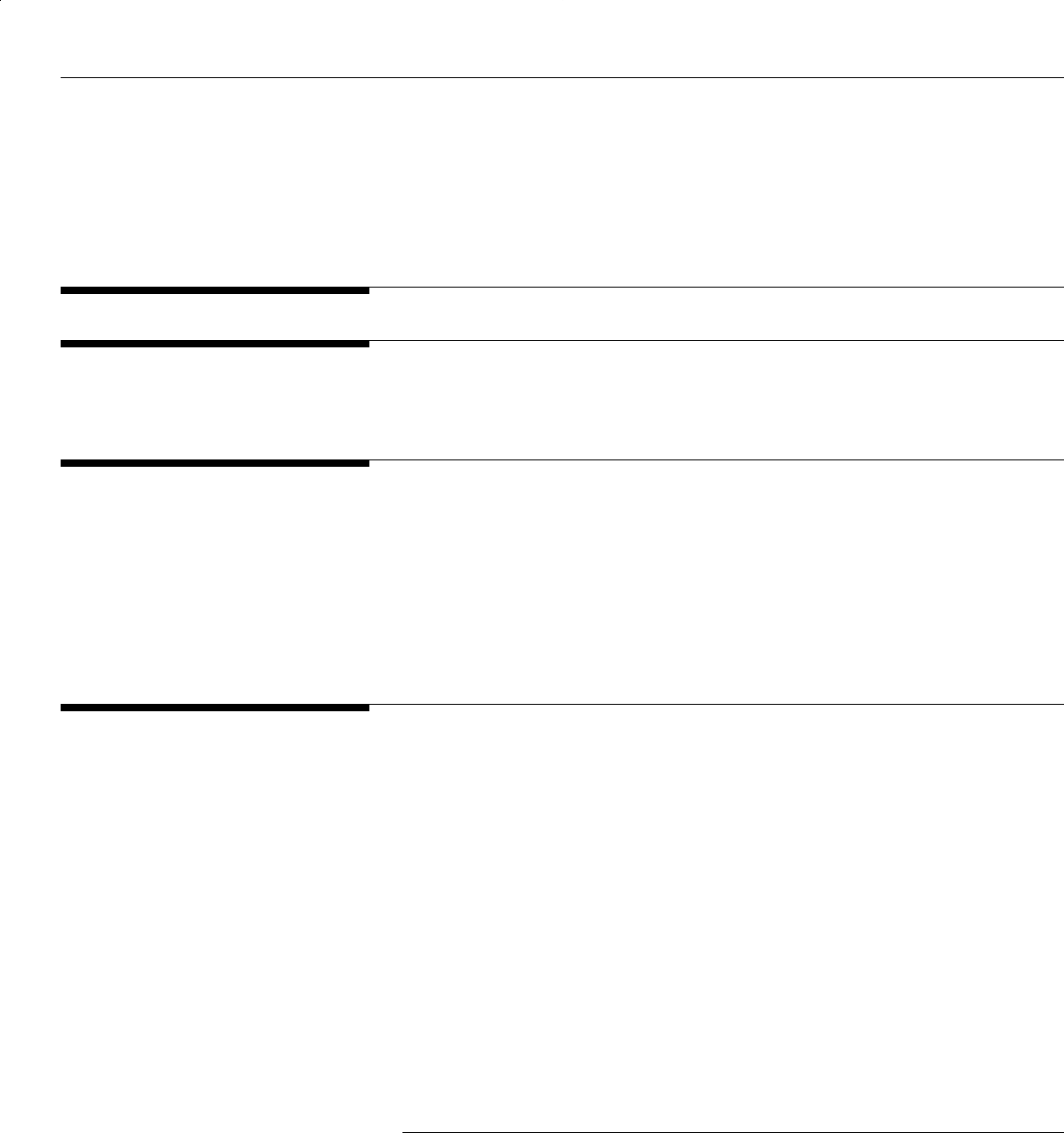
United States General Accounting Office
GAO
Report to the Chairman, Subcommittee
on Transportation, Committee on
Appropriations, U.S. Senate
June 1999
TRANSPORTATION
INFRASTRUCTURE
Advantages and
Disadvantages of
Wrap-Up Insurance for
Large Construction
Projects
GAO/RCED-99-155


GAO
United States
General Accounting Office
Washington, D.C. 20548
Resources, Community, and
Economic Development Division
B-281480
June 1, 1999
The Honorable Richard C. Shelby
Chairman, Subcommittee on Transportation,
Committee on Appropriations
United States Senate
Dear Mr. Chairman:
Traditionally, for large construction projects, project owners (such as
state departments of transportation and transit agencies), contractors, and
subcontractors have purchased insurance independently to protect
themselves from financial losses. In contrast, with wrap-up insurance, the
project owner can cover all the parties involved in the project—the owner,
the construction manager, the general contractor, and the subcontractors.
Over the past decade, wrap-up insurance has been used increasingly on
large construction projects because of the potential for cost savings. In
1998, wrap-up insurance covered about 300 construction projects
nationwide. However, wrap-up insurance has been used infrequently on
highway construction projects because they often are too small. As part of
your Committee’s continuing oversight of federally funded transportation
projects, you asked us to identify the advantages and the disadvantages of
wrap-up insurance over traditional insurance and the factors that can
affect the broader use of wrap-up insurance. As part of our methodology,
we reviewed the justification for, the costs of, and the potential benefits or
problems with wrap-up insurance on six federally funded highway and
mass transit projects. These projects varied in cost, geographic location,
and type of construction and included highway, bridge, tunnel, and rail
transit construction. We also interviewed officials in the insurance and
construction industry and reviewed reports and analyses of wrap-up
insurance in order to gain an understanding of the broad issues in using
wrap-up insurance.
Results in Brief
Owners of transportation projects, such as transit agencies and state
departments of transportation, experience a number of advantages and
disadvantages when they use wrap-up insurance. Major advantages
include savings from buying insurance “in bulk,” eliminating duplication
in coverage, handling claims more efficiently, reducing potential litigation,
and enhancing workplace safety. According to insurance industry officials,
wrap-up insurance can save project owners up to 50 percent on the cost of
traditional insurance, or from 1 to 3 percent of a project’s construction
GAO/RCED-99-155 Transportation InfrastructurePage 1

B-281480
cost, depending on its size. The potential disadvantages of wrap-up
insurance include requiring project owners to invest more time and
resources in administration. Project owners must hire additional
personnel or pay to contract out the management of the wrap-up
insurance. In addition, project owners could also have to pay large
premiums at the beginning of the project. However, transportation
officials said these costs were reasonable.
A number of factors can affect the broader use of wrap-up insurance.
Perhaps the most significant barriers are state systems for workers’
compensation that, in some states, effectively prevent wrap-up insurance
by greatly reducing its potential cost savings. Another limitation is that a
project must be sufficiently large, or contain at least a sufficient amount of
labor costs, to make wrap-up insurance financially viable. Finally, some
contractors dislike wrap-up insurance because it reduces a contractor’s
profits from insurance rebates.
Background
Contractors and project owners purchase insurance to protect their
business assets from potential claims and losses. Under both traditional
and wrap-up insurance, the project owner and construction contractors
must buy the same kinds of policies. The basic types of insurance for
construction projects include workers’ compensation, general liability,
architects’ and engineers’ professional liability, builders’ risk, excess
liability, and pollution liability.
1
For some projects, more specialized
insurance policies are needed. For example, construction projects on or
near water must have longshoremen’s and harborworkers’ insurance,
while projects on or near a railroad must have railroad protective liability
insurance. Wrap-up insurance can provide all of these types of coverage
but does not provide for automobile liability or insurance on the
contractors’ tools and equipment.
In general, a project owner may choose from two basic types of wrap-up
insurance. The simplest form of coverage is the payment of a flat premium,
also known as a guaranteed cost plan. With this plan, the premiums stay
the same during the term of the policy, even if a high amount of claims is
paid out. The guaranteed cost plan is the more common form of coverage
for small to medium-sized businesses. With the second type of plan,
known as a loss-sensitive plan, the premiums depend on the policyholder’s
claims that are actually paid, called “losses.” A loss-sensitive plan
generally returns a refund for low losses and charges additional premiums
1
See app. I for a description of these types of policies.
GAO/RCED-99-155 Transportation InfrastructurePage 2

B-281480
for high losses, giving the owner an incentive to run a safe operation. In
either a guaranteed cost or loss-sensitive plan, a policyholder can assume
a deductible limit (as with automobile insurance) before the insurance
carrier contributes to the claim settlement. Deductible limits make owners
assume some of the insurance risk, which helps to lower insurance costs.
Five of the six agencies we contacted chose loss-sensitive insurance plans;
one used a guaranteed cost plan. All six agencies used deductible limits to
lower their insurance costs.
Advantages and
Disadvantages of
Wrap-Up Insurance
Owners of construction projects have cited a number of advantages from
using wrap-up insurance, including potential cost savings and enhanced
workplace safety. The six projects we reviewed all claimed cost savings as
a result of using wrap-up insurance. According to project owners, the
fewer injuries resulting from centralized safety programs contributed to
these savings. Two potential disadvantages include greater administrative
costs to manage the wrap-up insurance and the potential for higher
up-front insurance premiums. However, the project owners believe that
these additional costs were reasonable.
Potential Cost Savings Are
Available From Wrap-Up
Insurance
According to insurance industry officials, wrap-up insurance can save
project owners up to 50 percent on the cost of traditional insurance, or
from 1 to 3 percent of a project’s construction cost. Officials from the six
transportation projects we reviewed estimated insurance savings of from
$2.9 million to $265 million by using wrap-up insurance. Wrap-up
insurance generates these savings by using bulk buying power, avoiding
duplicate insurance coverage, using more efficient ways to process claims,
and reducing litigation.
Purchasing Insurance in Bulk Insurance industry officials we interviewed said that the initial savings
from wrap-up insurance are due to an owner’s bulk buying power and
economies of scale. A project’s owner can purchase coverage at a lower
premium than the contractors would pay if they purchased insurance
individually. The owner can obtain coverage designed for the specific
needs of the project and provide primary coverage, such as that for
general liability and workers’ compensation, for all the contractors and
subcontractors involved in the project. However, the size of the
construction project will affect how much buying power the owner will
have; insurance companies can provide a better rate for larger projects.
Large labor-intensive projects with construction costs between $50 million
GAO/RCED-99-155 Transportation InfrastructurePage 3

B-281480
and $100 million would be in a better position to obtain wrap-up
insurance.
Avoiding Duplication and Gaps
in Coverage
As table 1 shows, under traditional insurance, every contractor and
subcontractor buys separate insurance policies. The result can be
duplication and overlap of coverage because the contractors and the
subcontractors are insuring themselves against the same accidents, even
though they all may not be liable for the resulting claims. This kind of
duplication can also result in litigation between insurance companies over
claims. Under wrap-up insurance, the project’s owner can ensure that
there are no gaps or duplication in coverage because only one insurance
company is used. This is an important factor for the owner because
contractors using different insurance companies could have variations in
their policies or lower coverage than required, thereby exposing the owner
to uninsured claims. By purchasing insurance directly, the owner can
ensure sufficient coverage for the general liability and workers’
compensation aspects of the policy as well as sufficient coverage for the
general contractor and the subcontractors.
2
Table 1: Traditional Insurance
Coverage Compared to Wrap-Up
Insurance
Traditional insurance Wrap-up insurance
The project owner purchases policies to
cover the following: workers’ compensation,
general liability, automotive liability, excess
liability, and builders’ risk insurance.
The project owner purchases insurance
policies that cover the owner, the general
contractor, and the subcontractors for the
following: workers’ compensation, general
liability, excess liability, and builders’ risk
insurance.
The general contractor purchases policies
to cover the following: workers’
compensation, general liability, automotive
liability, excess liability, and builders’ risk
insurance.
The subcontractors purchase policies from
multiple
insurance companies to cover the
following: workers’ compensation, general
liability, automotive liability, excess liability,
and builders’ risk insurance.
More Efficient Claims
Processing and Less Litigation
According to insurance brokers and project management officials,
wrap-up insurance facilitates more efficient and simplified claims
processing. A single insurer is the control point for reporting claims,
conducting the investigations, and making payments. In addition, a single
2
General liability insurance protects owners and contractors from the financial consequences of
various risks such as accidents, hazardous operations, or accidents after work is completed. The
policy pays for a variety of benefits including legal expenses, injuries to people, and damage to
property.
GAO/RCED-99-155 Transportation InfrastructurePage 4

B-281480
insurer can prepare the loss data for the owner to identify current claims
and costs. With one insurer, claim settlement procedures are more
consistent.
Wrap-up insurance reduces potential litigation and disputes between
insurance companies. For instance, the more insurers that are involved in
a construction project, the greater the chance of lawsuits to settle accident
and injury claims. This is especially true with traditional insurance
because each contractor purchases policies through separate insurance
companies. The subsequent disputes and litigation can be costly, as the
various insurance companies seek to determine responsibility and reduce
their liability. The liability and the litigation costs can be passed on to each
policyholder in the form of higher premiums. Wrap-up insurance, on the
other hand, can reduce the incidence of insurance companies’ disputes
and litigation and the associated costs because the policies are with a
single carrier that is responsible for claims.
Projects’ Estimated Cost
Savings
To test the cost savings associated with wrap-up insurance, we reviewed
six large transportation infrastructure projects that used this insurance.
Table 2 shows the projects we reviewed, the projects’ total costs, and the
owners’ estimated insurance costs for wrap-up insurance and traditional
insurance. All the project owners provided estimates of their costs to use
wrap-up or traditional insurance and their estimated savings. Estimated
savings for these projects ranged from about $3 million to $265 million. On
the basis of the owners’ estimates, using wrap-up insurance could save
between 1 and 3 percent of each project’s total costs.
The estimated savings for these transportation projects are consistent with
study results and industry estimates. In 1998, the Transit Construction
Roundtable conducted a survey of its members and had similar findings.
3
Of the 18 members who responded to the survey, 14 had experience with
wrap-up insurance, and all of them responded that wrap-up insurance
costs less than traditional contractor-provided insurance. Thirteen of these
project owners estimated that, on average, wrap-up insurance costs
28 percent less than traditional insurance. The six projects we reviewed
provided similar findings. Data from these six show that, on average, their
wrap-up insurance costs about 38 percent less than traditional insurance
would have cost.
3
The Transit Construction Roundtable is a partnership between the Federal Transit Administration and
local public transportation agencies that was formed to share information and discuss issues related to
the construction of mass transit systems.
GAO/RCED-99-155 Transportation InfrastructurePage 5

B-281480
Table 2: Transportation Projects Using
Wrap-Up Insurance and Owners’
Estimated Costs and Savings
Insurance costs
Dollars in millions
Project name
and location
Total project
cost Traditional Wrap-up
Insurance
savings
Blue Water
Bridge, Michigan
$97.2 $10 $7.1 $2.9
Boston Central
Artery Tunnel,
Massachusetts
$10,800 $1,030 $765 $265
I-15, Salt Lake
City, Utah
$1,600 $52.2 $22.3 $29.9
CTA Green Line
Rehabilitation,
Chicago, Illinois
$408.7 $32.5 $21.0 $11.5
Hudson-Bergen
Light Rail (initial
segment)
$992 $20 $11 $9
Tri-Met, Westside
Light Rail,
Portland, Oregon
$952 $27.1 $17.2 $9.9
Note: We did not independently audit the accuracy of the project owners’ cost estimates. In the
process of choosing to use wrap-up insurance, each owner developed cost information by one of
three methods: (1) obtaining two bids—one with insurance included and one with insurance
excluded, (2) removing insurance costs from existing contracts, or (3) relying on brokers’
estimates of traditional insurance.
Source: Various state highway and mass transit authorities.
Centralized Safety
Programs Are
Important to
Achieving Savings
Much of the potential savings from wrap-up insurance derives from a
well-managed centralized safety program that results in fewer injuries.
Under traditional insurance, each contractor, along with its insurance
broker and insurance company, may be involved in safety, but typically
there is no single coordinated safety program. While some contractors
budget for safety and make every effort to run a safe operation under
traditional insurance, coordination can be difficult because there are many
insurance companies and contractors, each with its own safety program.
In contrast, wrap-up insurance can provide a greater emphasis on and
level of control over safety because the project owner controls the safety
program and can ensure that there is an effective, comprehensive safety
program in place. Each of the six projects we reviewed had centralized
safety programs and safety records that were better than the national
average. Officials from each project stated that the project’s safety
program contributed to its actual or projected insurance savings.
GAO/RCED-99-155 Transportation InfrastructurePage 6

B-281480
Wrap-Up Insurance
Facilitates Comprehensive
Safety Programs
According to insurance industry officials, wrap-up insurance can improve
safety because one safety team can oversee all aspects of safety at a job
site. Project owners said that using wrap-up insuranceallowed for the
development of a centralized safety program covering all the operations of
the contractor and the subcontractors. Owners, insurance brokers, and
insurance companies have a compelling financial interest to keep claims
to a minimum. Owners can save by having to pay less in deductibles, while
insurance brokers and companies pay out less when there are fewer
claims. Therefore, the safety representatives of the project owner, the
insurance broker, the insurance companies, and the contractors oversee
the procedures outlined in the comprehensive safety plan. A project’s
safety team provides an ongoing on-site presence to improve safety and
can provide innovative safety improvements. For example, in constructing
the Blue Water Bridge in Michigan, the project’s management team faced
the problem of providing safety netting for its bridge workers to protect
them from a fatal fall. Traditionally, safety netting is strung to an existing
structure, and the workers that string the safety netting have to work
without the protection that they are installing. Because of this emphasis on
safety, the general contractor developed the idea of attaching the nets to
the bridge before the sections were put in place, thus eliminating the need
for the dangerous work involved in stringing the nets and reducing the risk
of a fall.
In contrast, under traditional insurance, a coordinated approach to project
safety is difficult because the contractors and the subcontractors oversee
safety for only their segment of the work. In addition, there is some
variability in how much emphasis individual contractors place on safety;
while some contractors make every effort to achieve safety, others may
not. Also, with traditional insurance, insurance brokers and companies
with minimal involvement in a project cannot justify a continuous safety
presence at the construction site. As a result, some contractors and
subcontractors may not be closely monitored. Finally, lower insurance
rates are a safety incentive for general contractors and subcontractors
under traditional insurance. However, as one insurance industry official
noted, other incentives, such as bonuses for early completion, can make
completing a project within a certain time frame an overriding objective
for them.
Project Owners Believe a
Centralized Safety
Program Saved Costs
Each of the six project owners we contacted emphasized the importance
of a centralized safety program as the basis for the success of their
wrap-up insurance. According to officials from the six transportation
GAO/RCED-99-155 Transportation InfrastructurePage 7

B-281480
projects, improved safety at a construction site has the positive effect of
reducing general liability and workers’ compensation claims, thus
producing cost savings for the owner. All six project owners cited injury
losses lower than the national average and lower than had been initially
anticipated. For example, officials from the Boston Central Artery project
identified reduced injuries as the main basis for cost savings on their
project and cited a loss ratio of 23 percent compared to a historic national
average of about 65 percent for that type of construction project.
4
Officials
from the Michigan Blue Water Bridge project cited a loss ratio of
10 percent compared to a national average of 50 percent for that type of
project. Moreover, project owners said that even without the cost
reductions resulting from the lower claims, improving safety on large
construction projects is a worthy goal in itself. In the case of the Portland
Tri-Met project, the primary reason for using wrap-up insurance was not
cost savings but improved safety, according to agency officials. They said
that using wrap-up insurance allowed them to establish the type of
well-controlled safety program they believed was essential to the project.
Project Owners Face
Increased Administrative
Costs With Wrap-Up
Insurance
One of the disadvantages to using wrap-up insurance is the additional
administrative and up-front insurance costs that the project owners can
incur. Project owners are responsible for administering the wrap-up
insurance and must either out source this function or assign additional
administrative staff to plan and implement it. Depending on how it is
structured, wrap-up insurance can also have large premium costs at the
start of a construction project. In addition, wrap-up insurance presents
project owners with greater risks than with traditional insurance.
However, these increased risks can be mitigated somewhat by the type of
insurance policies that owners purchase and by an effective safety
program.
Wrap-up insurance can impose additional administrative burdens on
project owners. They become responsible for supplying the resources to
help design and implement its administration. Wrap-up insurance
emphasizes job site safety, controlling losses, and effective claims
management—activities that require additional resources for internal
audits and risk management. For the projects we reviewed, some owners
chose to out source some of these administrative functions to insurance
brokers or agents, while others performed some or all of these functions
with their staff. For example, the Chicago Transit Authority relied on its
broker to administer the wrap-up insurance for the Green Line
4
A loss ratio is the dollar amount paid out for claims as a percentage of premiums paid.
GAO/RCED-99-155 Transportation InfrastructurePage 8

B-281480
Reconstruction project. The Michigan Department of Transportation
(
MDOT) and the New Jersey Transit Corporation also delegated
administrative responsibilities to their insurance agents and brokers. On
the other hand, the Tri-County Metropolitan Transportation District of
Oregon used its staff to administer the wrap-up insurance program for its
Westside Light Rail project. Most owners hired safety engineers for their
projects to supplement their insurance brokers’ and general contractors’
safety teams. However, all of the agencies we contacted relied on their
insurance companies to investigate and settle claims.
Recognizing the increased interest in using wrap-up insurance for public
construction projects, the Transit Construction Roundtable in 1998
surveyed transit agencies on their use of wrap-up insurance. The survey
asked them whether a wrap-up insurance program added an additional
administrative burden. All the respondents affirmed that wrap-up
insurance added to their administrative workload but that the burden was
reasonable.
In addition, some insurance companies may require owners to make large
premium payments at the start of a construction project. The policies may
require that owners establish a special reserve to ensure that funds are
available to pay deductible requirements on claims. For example, the
Chicago Transit Authority had to pay $21 million in premium costs at the
beginning of the Green Line project. This was an additional burden to the
owner because, under a traditional insurance arrangement, the owner
would not have to make a lump sum payment. The owner would make
payments to contractors, who would have to make premium payments and
establish their own reserves for deductibles.
Factors Preventing
the Broad Application
of Wrap-Up Insurance
State insurance laws, minimum project size, and contractors’ concerns
may limit the broader use of wrap-up insurance. Some states specify that
contractors must use the state fund for workers’ compensation as the
primary insurance vehicle for construction projects.
5
Because
three-fourths of the total insurance cost on a construction project can be
for workers’ compensation, removing it from the project owner’s control
effectively eliminates most of the cost savings derived from wrap-up
insurance. Projects must also have sufficiently high labor costs to produce
the level of premium payments that insurance companies need to
underwrite a wrap-up. This normally limits wrap-up programs to larger
5
Workers’ compensation insurance pays claimants in case of injury, disability, or death of employees
resulting from work on the job.
GAO/RCED-99-155 Transportation InfrastructurePage 9

B-281480
construction projects or projects with high labor costs. Finally, some
construction contractors dislike wrap-up insurance. Contractors view
insurance rebates as a potential source of profits that they do not obtain
with wrap-up insurance because with wrap-up insurance such rebates go
to the project owner.
State Insurance Regulation
Wrap-up insurance may not be viable in at least five states because of the
way the states structure their workers’ compensation system. According to
a 1997 General Services Administration study of wrap-up insurance,
6
five
states—North Dakota, Ohio, Washington, West Virginia, and
Wyoming—have a state workers’ compensation fund into which all
contractors pay. In these states, a project owner cannot obtain separate
workers’ compensation insurance coverage, so most of the insurance
premiums for a project would be excluded from the owner’s wrap-up
insurance. This effectively eliminates the owner’s financial benefit from
wrap-up insurance because the bulk of insurance for a construction
project—as much as 75 percent of the cost—is related to workers’
compensation. Thus, wrap-up insurance without workers’ compensation
eliminates most of the owner’s potential cost savings. Insurance regulation
is generally a state function, and states have placed requirements on
wrap-up insurance that may limit but do not necessarily prevent its use.
For example, some states, such as Michigan and Oregon, have specific
laws that limit wrap-up insurance. Both states require that an owner
obtain prior approval for wrap-up insurance from the state insurance
regulator. Michigan law also establishes a minimum project cost of
$65 million to be eligible for wrap-up insurance. Oregon law sets a
$100 million minimum project cost to be eligible for wrap-up insurance
and prohibits rolling wrap-up insurance, that is, combining several
different projects under one insurance program.
Project Size and Labor
Costs
For an insurance company to issue policies for wrap-up insurance, a
project must be large enough to generate enough premiums to make it
worthwhile for the company. For this reason, wrap-up insurance generally
has not been used on small projects. Most of the insurance premiums an
owner pays under wrap-up insurance are to cover potential workers’
compensation claims. The insurance premiums for workers’ compensation
are based on the project’s estimated payroll costs multiplied by the
workers’ compensation rate set by the state. As the payroll costs for a
project increase, the amount of workers’ compensation premiums also
6
Wrap-Up Insurance Study, General Services Administration, Dec., 1997.
GAO/RCED-99-155 Transportation InfrastructurePage 10

B-281480
increases. Likewise, if the state’s workers’ compensation rate increases,
the amount of workers’ compensation premiums increases. The General
Services Administration’s study of the use of wrap-up insurance for federal
buildings concluded that insurers usually require at least $1.25 million in
annual premiums before they will assume the risk associated with a
wrap-up policy. However, because workers’ compensation rates vary from
state to state, the amount of payroll required to generate the required
premiums also varies. For example, Indiana, which has a low workers’
compensation rate, might require a project with $16.9 million in labor
costs to reach the $1.25 million annual premium level. In contrast, a
project in Minnesota, which has a high workers’ compensation rate, would
need only $3.2 million in labor costs to produce the same amount of
premiums. Because of these variations among the states, an owner’s
decision to use wrap-up insurance should be made on a project-by-project
basis, according to insurance industry officials.
For small construction projects that cannot achieve the $1.25 million
premium threshold, some owners have used rolling wrap-up insurance
that combines several projects under one insurance program. For
example, on the basis of its positive experience with wrap-up insurance on
the I-15 highway project, Utah established rolling wrap-up insurance for its
entire state highway program. Utah officials stated that it was too early to
assess performance of this insurance. However, one insurance industry
official cautioned that combining multiple small projects that are spread
over separate locations could greatly diminish the safety enhancements
and the resulting cost savings that can come from wrap-up insurance. The
official said it would be difficult to provide oversight and implement a
comprehensive safety program for many small projects spread over
separate locations. Therefore, one question to be answered is whether
Utah can achieve the same safety program and results on a statewide basis
as it did with the I-15 highway project.
Contractors’ Views and
Concerns About Wrap-Up
Insurance
For several reasons, some construction contractors view the use of
wrap-up insurance unfavorably. Under traditional insurance, contractors
can derive profits from their insurance programs. The contractors’ costs of
insurance are included in the bids and thus are paid by the project owner.
Contractors with good safety records can receive rebates on their
premiums from their insurance carriers, thereby generating profits. In
contrast, under wrap-up insurance the owner pays the premiums and
receives the rebates on the basis of a project’s good safety record.
However, some project owners provide contractors with good safety
GAO/RCED-99-155 Transportation InfrastructurePage 11

B-281480
records with additional payments. For example, contractors for Portland’s
Tri-Met Westside Project received almost $1.3 million in safety incentives.
Under a traditional insurance approach, a contractor with a better safety
record has a competitive advantage over a contractor with a safety record
that is not as good. The safer contractor has lower insurance premiums, so
this lower cost can be reflected in a lower bid. Under wrap-up insurance,
this competitive advantage is lost because insurance is not part of a
contractor’s bid. On the other hand, as a risk management consultant we
interviewed pointed out, many factors go into the bidding calculations of a
construction contractor, and insurance premiums can be less important
than other factors, such as labor productivity. In addition, officials from
Portland Tri-Met and the Chicago Transit Authority stated that by
eliminating insurance from bids, more disadvantaged businesses,
minorities, and women contractors are able to bid on construction
contracts. According to Chicago Transit Authority officials, using wrap-up
insurance on the Green Line project enabled the agency to achieve its goal
of having disadvantaged, minority, and women contractors represent
30 percent of the project’s costs. Some disadvantaged businesses,
minorities, and women contractors have difficulty obtaining sufficient
insurance to bid on large infrastructure projects.
In addition, with wrap-up insurance, a contractor may bear additional
record-keeping costs. For example, in reporting for workers’
compensation purposes, a contractor must carefully segregate the payroll
for a project using wrap-up insurance from the payrolls for other projects.
When a project requires changes to the original specifications, the
contractor has to remove insurance costs from the change order costs and
again segregate the labor costs. Thus, the contractor incurs costs in a
wrap-up insurance project that, under traditional insurance, would not be
necessary.
MDOT officials noted that to be fair to contractors, project
owners need to make contractors aware of these added costs before
contractors bid on a project.
Scope and
Methodology
To obtain information on the advantages and the disadvantages and the
factors affecting the broader use of wrap-up insurance, we reviewed
related publications and contacted trade associations, insurance brokers,
representatives of insurance companies, contractors’ representatives, and
a risk-management consultant. In addition, we interviewed officials from
the Department of Transportation’s Federal Highway Administration and
Federal Transit Administration about the extent to which wrap-up
GAO/RCED-99-155 Transportation InfrastructurePage 12

B-281480
insurance has been used on federally funded highway and transit
construction projects. For further review, we selected six transportation
projects that had recent or ongoing experience with wrap-up insurance.
We contacted managers and reviewed project documents for three
highway projects: the Michigan Department of Transportation’s Blue
Water Bridge Reconstruction, the Utah Department of Transportation’s
I-15 Reconstruction, and the Massachusetts Turnpike Authority’s Boston
Central Artery/Tunnel. We also reviewed three transit projects: the
Chicago Transit Authority’s Green Line Reconstruction, the New Jersey
Transit Corporation’s Hudson-Bergen Line, and the Oregon Tri-County
Metropolitan Transportation District’s Westside Line. The projects we
selected provided variations in project cost, type of construction (tunnel,
bridge, highway, light rail, and heavy rail), and state insurance regulatory
environment and included design-build and traditional construction
approaches.
We performed our review from September 1998 through April 1999 in
accordance with generally accepted government auditing standards.
Agency Comments
We provided a draft of this report to the Department of Transportation for
review and comment. We discussed the Department’s comments with
officials from the Office of the Secretary and the Federal Highway
Administration. The Department agreed with the information presented,
and the Federal Highway Administration provided several technical
comments that we incorporated into the report, as appropriate.
We will send copies of this report to cognizant congressional committees;
Rodney E. Slater, Secretary of Transportation; Kenneth R. Wykle,
Administrator, Federal Highway Administration; Gordon J. Linton,
Administrator, Federal Transit Administration; and other interested
parties. We will make copies available to others upon request. Please call
GAO/RCED-99-155 Transportation InfrastructurePage 13

B-281480
me at (202) 512-2834 if you or your staff have any questions. Major
contributors to this report were Joseph Christoff, Robert Ciszewski,
Alexander Lawrence, and Frank Taliaferro.
Sincerely yours,
Phyllis F. Scheinberg
Associate Director,
Transportation Issues
GAO/RCED-99-155 Transportation InfrastructurePage 14

GAO/RCED-99-155 Transportation InfrastructurePage 15

Contents
Letter
1
Appendix I
Types of Construction
Insurance
18
Appendix II
Transit and Highway
Construction Projects
Using Wrap-Up
Insurance
20
Tri-Met Westside Light Rail Line 20
New Jersey Transit Corporation Hudson-Bergen Rail Line 22
Chicago Transit Authority Green Line Rehabilitation Project 24
Utah Department of Transportation Interstate 15
(I-15) Reconstruction Project
26
Boston Central Artery/Tunnel Project 28
Michigan Department of Transportation Blue Water Bridge
Project
30
Tables
Table 1: Traditional Insurance Coverage Compared to Wrap-Up
Insurance
4
Table 2: Transportation Projects Using Wrap-Up Insurance and
Owners’ Estimated Costs and Savings
6
Abbreviations
CA/T Central Artery/Tunnel
CTA Chicago Transit Authority
FHWA Federal Highway Administration
GAO General Accounting Office
MDOT Michigan Department of Transportation
UDOT Utah Department of Transportation
GAO/RCED-99-155 Transportation InfrastructurePage 16

GAO/RCED-99-155 Transportation InfrastructurePage 17

Appendix I
Types of Construction Insurance
The following is a brief description of the various types of insurance
coverage used for construction projects.
Workers’ Compensation Pays claimant in case of injury, disability, or death of employees resulting
from work on the job.
General Liability Protects the owners and the contractors from the financial consequences
of various risks, such as accidents, hazardous operations, or accidents,
after work is completed. The policy pays for a variety of benefits,
including legal defense expenses, injuries to people, and damage to
property.
Builders’ Risk Pays for damages and losses to a project that occur while it is being built.
Excess Liability An umbrella policy that pays for losses that exceed primary policies, such
as general liability.
Pollution Liability Pays for environmental losses associated with accidental chemical spills
and the leakage or disbursement of dangerous vapors.
Professional Liability Pays for architects’ and engineers’ professional liability for errors and
omissions. This coverage is usually purchased by the architectural and
engineering firms but could be included under wrap-up insurance for a
design-build project.
Railroad Protective Liability insurance coverage for railroads, purchased by those who
conduct operations (construction) on or adjacent to railroad property.
Longshoremen/Maritime Liability insurance similar to workers’ compensation that provides
coverage for workers, including construction workers, on the water
(working on barges) or those working over water.
Automobile Liability Pays for damage to one or more vehicles that occurs while they are used in
the course of business. Also pays medical costs of persons injured in or by
an automobile. This insurance is typically not included in wrap-up
insurance because vehicles are operated outside the confines of the
project.
Tools and Equipment Pays when a contractor’s tools, equipment, field offices, or other property
are destroyed, damaged, or stolen. This insurance is not included in
wrap-up insurance because these items are considered mobile and
GAO/RCED-99-155 Transportation InfrastructurePage 18

Appendix I
Types of Construction Insurance
therefore difficult to manage. In addition, the premium costs for these
policies are not significant and would be difficult to isolate from bids.
GAO/RCED-99-155 Transportation InfrastructurePage 19

Appendix II
Transit and Highway Construction Projects
Using Wrap-Up Insurance
Tri-Met Westside Light
Rail Line
Project Description
The Westside Light Rail line is an 18-mile extension of the existing light
rail line and runs west from downtown Portland to Hillsboro, Oregon. The
project included a 3-mile double tunnel, a station 260 feet below the
surface, and 19 other stations. In addition to the tunnel, project engineers
encountered other difficulties in building the line, including obtaining
rights-of-way through some heavily populated areas of central Portland.
Construction started in July 1993 and was completed in September 1998.
The project’s total estimated cost was about $952 million, as of
February 1999. The project’s construction costs included purchasing 36
low-floor, light rail cars and building a 74,000-square-foot maintenance
facility.
Wrap-Up Insurance
Coverage
Johnson and Higgins, Marsh and McLennan was the insurance broker for
this project. Marsh and McLennan hired the brokerage firm of DH Lloyd to
provide administrative support for the workers’ compensation portion of
the wrap-up insurance. However, according to Tri-Met officials, Oregon
law prohibits the use of deductibles for workers’ compensation insurance.
The officials said they could have saved more money if they had been able
to purchase a workers’ compensation policy that had deductibles.
Rationale for Using
Wrap-Up Insurance
Tri-Met officials stated that they used wrap-up insurance to increase their
control over the project, enhance safety, and improve efficiency with
which claims are settled. Officials noted that wrap-up insurance is
particularly suitable for large, complex projects like the Westside Light
Rail line and that they would use it again on another large project.
Oregon passed specific legislation to allow wrap-up insurance. Prior
approval by the state director of insurance is required, but wrap-up
insurance can be used only for a construction project costing over
$100 million and scheduled to be completed in 5 years. Project owners
also have to demonstrate that wrap-up insurance would substantially
improve safety and claims handling. The state prohibits wrap-up insurance
to be used for unrelated projects that are combined only to meet the
$100 million requirement. In addition, the broker handling the wrap-up
insurance is required to protect small insurance agents who could suffer
GAO/RCED-99-155 Transportation InfrastructurePage 20

Appendix II
Transit and Highway Construction Projects
Using Wrap-Up Insurance
from the loss of income that threatens to put them out of business. This
protection took the form of a special fund of $25,000 for every $100 million
in project costs to be deposited with the state of Oregon.
Savings Experience
Tri-Met officials estimated savings of about $10 million from using wrap-up
insurance. Tri-Met officials estimated that traditional insurance would cost
about $27.1 million, whereas their final wrap-up insurance costs, including
reserves, were about $17.2 million. Tri-Met officials required bidders to
remove insurance from their bids, but directed them to include an estimate
for traditional insurance should the agency decide not to use wrap-up
insurance. Bidders were also directed to include an estimate of
subcontractors’ insurance. Tri-Met provided contractors with safety
incentives totaling about $1.3 million.
Safety Program
Overall, Tri-Met officials were pleased with the results of the project’s
safety program. However, they had to adjust the program midway through
the project. To improve safety, Tri-Met officials began monthly safety
meetings, added more safety engineers, and authorized safety engineers to
halt construction when they observed unsafe conditions. The safety
program was difficult to administer, in part, because it was spread over a
wide area. Agency officials said that compared to the federal average for
all construction, the project had a good safety record because it included a
twin-tunnel, which involved greater risk than other types of construction.
Tri-Met officials had a target loss ratio of 40 percent and finished the
project with a loss ratio of 36.7 percent. Three fatalities on the project
contributed to the loss ratio.
GAO/RCED-99-155 Transportation InfrastructurePage 21

Appendix II
Transit and Highway Construction Projects
Using Wrap-Up Insurance
New Jersey Transit
Corporation
Hudson-Bergen Rail
Line
Project Description
According to the New Jersey Transit Corporation, the Hudson-Bergen
Light Rail Transit System will alleviate traffic congestion and pollution and
allow people to move more efficiently between densely populated areas of
northern New Jersey. The initial 9.6-mile segment will have 16 stations and
will run along the Hudson River from Hoboken to Bayonne. When
completed, the entire 20-mile project will connect to ferries and other rail
lines to take passengers to New York City. Construction began in
December 1996, and the initial 9.6-mile segment is scheduled to open for
service in March 2000. New Jersey Transit estimates the segment will cost
$992 million, including the low-floor, light-rail cars and a new maintenance
facility.
Wrap-Up Insurance
Coverage
Johnson and Higgins, Marsh and McLennan were the insurance brokers for
this project. The Hudson-Bergen line’s construction is being done under a
design, build, operate, and maintain contract. Because one construction
firm is responsible for all of these functions, additional insurance was
needed to cover the design, operations, and maintenance activities that
would not normally be included under wrap-up insurance. As a result, in
addition to the workers’ compensation, general and excess liability
policies, the wrap-up insurance includes a professional liability policy to
cover engineering errors and omissions, an environmental liability policy,
and builders’ risk coverage.
Rationale for Using
Wrap-Up Insurance
New Jersey Transit officials decided to use wrap-up insurance for several
reasons, including cost savings and improved safety. Wrap-up insurance
also ensured that all contractors and subcontractors had the same type
and limits of coverage. Furthermore, New Jersey Transit officials said that
covering every contractor with one insurance carrier eliminated lawsuits
among insurance carriers. New Jersey Transit staff and the insurance
broker were also able to reduce the administrative costs associated with
receiving, documenting, and verifying separate insurance certificates for
each contractor and subcontractor. New Jersey Transit officials also said
GAO/RCED-99-155 Transportation InfrastructurePage 22

Appendix II
Transit and Highway Construction Projects
Using Wrap-Up Insurance
that using wrap-up insurance helped disadvantaged and minority business
enterprises because under traditional insurance, high insurance costs or
requirements might preclude their participation.
New Jersey Transit officials stated that, because of their positive
experience with wrap-up insurance, they may use it for other planned
construction projects. They noted that no state laws limit the use of
wrap-up insurance and they are currently using it on another transit
project. New Jersey Transit officials said that $20 million is the lowest
amount in labor costs that a project needs for wrap-up insurance to be
cost-effective.
Savings Experience
New Jersey Transit officials estimated that they saved $9 million using
wrap-up insurance on the Hudson-Bergen project. They budgeted
$11 million for wrap-up insurance for the project but estimated that
traditional insurance would have cost $20 million. Prior to implementing
wrap-up insurance, they solicited proposals from various insurance
companies to estimate the costs of traditional insurance.
Safety Program
According to New Jersey Transit officials, by using wrap-up insurance,
they planned, organized, and implemented a common set of safety
procedures under a centralized safety program. Officials said that the
insurance broker, New Jersey Transit, and the contractors all have
representatives in the field to help ensure that safety is maintained. In
addition, the insurance broker processes and monitors claims and
identifies lapses in safety. As a result of their safety program, the officials
noted that the project received safety awards from one of the insurance
carriers.
GAO/RCED-99-155 Transportation InfrastructurePage 23

Appendix II
Transit and Highway Construction Projects
Using Wrap-Up Insurance
Chicago Transit
Authority Green Line
Rehabilitation Project
Project Description
In February 1994, the Chicago Transit Authority (CTA) began rehabilitating
its 100-year-old Green Line system at a cost of about $409 million. Over the
prior 20 years, the line’s physical condition had deteriorated, causing
CTA
to increase the amount of time and resources to maintain it. The
deterioration resulted in longer travel times because of the number of
“slow zones” established for repairs and safe usage. The travel time from
one end of the line to the other was 73 minutes, compared to the original
design time of 45 minutes. Renovation included making stations accessible
to the disabled, shoring up steel structures, and replacing all bridge ties
and track. Construction began in February 1994 and was substantially
completed as of April 1999.
Wrap-Up Insurance
Coverage
Near North Insurance Brokerage, Inc., designed and administered the
wrap-up insurance. Several carriers provided insurance coverage for the
project.
CTA used a loss sensitive plan for its workers’ compensation and
general liability coverage, and included umbrella and excess liability,
builders’ risk and lead abatement liability insurance. Total wrap-up
insurance costs were about $23.6 million.
Rationale for Using
Wrap-Up Insurance
CTA officials said the agency had never used wrap-up insurance before but
used it on this project because of its size, the potential for large losses, a
desire to save money, and most importantly, to enhance safety through a
combined and coordinated safety program. Wrap-up insurance allowed the
agency to avoid gaps in and inadequate levels of coverage among the
contractors as well as expired coverage. Officials also stated this type of
insurance program would minimize disputes among insurance carriers and
guarantee effective claims management by using one primary insurance
carrier for claims reporting, investigation, and payment. In addition,
CTA
was able to help minority and disadvantaged business enterprises
participate in a construction project they normally would not be able to
afford. According to agency officials, minority and disadvantaged business
participation in this rehabilitation project was about 30 percent.
GAO/RCED-99-155 Transportation InfrastructurePage 24

Appendix II
Transit and Highway Construction Projects
Using Wrap-Up Insurance
Savings Experience
The insurance broker estimated that premium costs for workers’
compensation and general liability under a traditional insurance plan
would have cost
CTA about $32.5 million. Under wrap-up insurance, the
cost for these two lines of coverage is $21 million, an estimated savings of
about $11.5 million. However,
CTA did not obtain estimates of other types
of insurance, including builders’ risk, railroad protective liability, and lead
abatement. These items added about $2.6 million to the wrap-up
insurance, raising the total wrap-up insurance cost to about $23.6 million.
According to
CTA officials, because all claims have not been finalized, as of
March 1999, they do not know the full amount of savings.
Safety Program
CTA relied on its construction program manager and insurance company
staff to manage the operations of the project’s safety program. The project
had a safety incentive program that provided cash awards for the prime
contractor and the subcontractors. The actual cash award will be based on
the specific loss experience for each individual contractor and
subcontractor as well as the overall project loss. According to the agency’s
broker, as of February 1999, about $2.9 million remains in the loss fund
account. If no additional workers’ compensation or general liability claims
are made,
CTA will share this money with the contractors on a
70-percent/30-percent basis in the form of safety incentive awards.
GAO/RCED-99-155 Transportation InfrastructurePage 25

Appendix II
Transit and Highway Construction Projects
Using Wrap-Up Insurance
Utah Department of
Transportation
Interstate 15
(I-15) Reconstruction
Project
Project Description
The Interstate 15 (I-15) project in Salt Lake City, Utah, is the largest
“design-build” highway project ever undertaken in the United States.
7
The
Utah Department of Transportation (
UDOT) is reconstructing 17 miles of
interstate highway in and around Salt Lake City, Utah; replacing all
existing pavement; widening the road from 6 to 12 lanes; reconstructing
several major interstate highway junctions; and replacing about 140
bridges and other structures. The project is part of the state’s 10-year,
$2.6 billion plan for constructing and reconstructing highways throughout
Utah. According to state and Federal Highway Administration (
FHWA)
officials, the project is critical to both the transportation infrastructure of
the Salt Lake City area and the city’s and state’s ability to host the Winter
Olympic Games in 2002. Construction began in April 1997 and is scheduled
for completion in July 2001 at an estimated cost of $1.6 billion. As of
April 1999, the project was 60-percent complete.
Wrap-Up Insurance
Coverage
UDOT, with the assistance of Willis Corroon, insurance brokers for the
project, designed and implemented the wrap-up insurance. The project
uses a guaranteed plan with a $9.8 million
UDOT deductible. The total cost
of the wrap-up insurance is about $22.3 million and includes the following
coverage: workers’ compensation and general liability, umbrella liability,
professional liability, contractors’ pollution liability, railroad protective
liability, and builders’ risk.
Rationale for Using
Wrap-Up Insurance
According to a UDOT official, using wrap-up insurance will save the state
money. The state views these potential savings as significant, particularly
for the general liability and the workers’ compensation coverage.
UDOT
considers the administrative demands of implementing the safety program
to be manageable. Officials began using wrap-up insurance for Utah’s
highway construction projects on a statewide basis in 1999.
UDOT expects
7
A design-build contract combines, rather than separates, responsibility for the design and
construction phases of a project.
GAO/RCED-99-155 Transportation InfrastructurePage 26

Appendix II
Transit and Highway Construction Projects
Using Wrap-Up Insurance
to realize economies of scale by using rolling wrap-up insurance on all its
highway programs. Nevertheless, the state acknowledges that using rolling
wrap-up insurance will take more administrative effort because of the
larger number of contractors involved.
Savings Experience
UDOT officials estimated that the agency saved about $30 million over the
cost of using a traditional form of insurance coverage for I-15
reconstruction. Traditional coverage would have cost them as much as
$52.2 million compared to the maximum estimated wrap-up insurance cost
of $22.3 million. Because the project is 60-percent complete and
out-of-pocket claims paid to date are about $900,000, the state expects the
final claims to be no more than $4 million. This will allow the state to save
an additional $4 million in insurance costs.
Safety Program
Safety oversight is a shared responsibility between the state, the insurance
company, and the contractors.
UDOT provides two to three staff persons to
the project to review safety procedures and to ensure that contractors
perform weekly site safety inspections.
UDOT has developed a Safety
Incentive Program for the project that provides the contractor with
monetary incentives for the successful completion of the project’s safety
program. Furthermore, these incentives are specifically tied to loss-time
accident rates. According to
UDOT, the safety program has resulted in a
loss-time accident rate of 0.8 that is well below the national average of 5.0.
There has been one fatality on the project, according to a
UDOT official.
GAO/RCED-99-155 Transportation InfrastructurePage 27

Appendix II
Transit and Highway Construction Projects
Using Wrap-Up Insurance
Boston Central
Artery/Tunnel Project
Project Description
The Central Artery/Tunnel (CA/T) project comprises building or
reconstructing about 7.5 miles of urban highways—about half of them
underground. The project is designed to reduce traffic congestion in
downtown Boston through the construction of an 8- to 10-lane
underground Central Artery, a four-lane underwater tunnel that crosses
Boston Harbor, and a commercial traffic bypass road through South
Boston. The project entails numerous and complex construction
challenges in tunneling under densely populated downtown Boston and
close to buildings and subway tunnels. The current cost estimate for the
project is $10.8 billion.
8
Construction, which began in 1991, is about
50-percent complete and is scheduled for completion in 2004.
Wrap-Up Insurance
Coverage
According to project officials, the total wrap-up insurance cost is
$764.9 million. This covers general and excess liability and accidental
pollution ($234 million); workers’ compensation ($481.5 million);
architects’ and engineers’ professional liability ($11 million); builders’ risk
($22.1 million); railroad protective liability ($4.5 million); and airport
contractors’ liability for Logan Airport ($11.8 million). Coverage for
general liability, workers’ compensation and airport contractors’ liability is
under a loss-sensitive plan while coverage for professional liability,
builders’ risk, and railroad protective liability is under a fixed-price plan.
Rationale for Using
Wrap-Up Insurance
Massachusetts had past experience with other wrap-up insurance when
the
CA/T project began. The state chose wrap-up insurance because it
would facilitate coordinated claims processing, improve overall program
administration, centralize data collection, and facilitate efficient financial
reporting and audits of the program and its participants. Wrap-up
insurance also ensures that coverage for all the contractors and the
subcontractors is in effect and has not lapsed or changed. The project
changed from traditional to wrap-up insurance after the bidding of some
initial contracts. The contractors had to go back and remove insurance
costs from their bids, which project officials found to be a difficult and
8
See Surface Infrastructure: Costs, Financing, and Schedules for Large-Dollar Transportation Projects
(GAO/RCED-98-64, Feb. 12, 1998).
GAO/RCED-99-155 Transportation InfrastructurePage 28

Appendix II
Transit and Highway Construction Projects
Using Wrap-Up Insurance
cumbersome process. Subsequent contracts have been let with
instructions indicating that the owner would provide insurance.
Savings Experience
Officials said that if the project had used traditional insurance, they
estimated insurance costs at about $1.03 billion. Wrap-up insurance has
reduced their costs to $765 million—a $265 million savings. Massachusetts
Turnpike Authority officials said they used wrap-up insurance because it
would save the agency $200 million alone in general liability and workers’
compensation coverage due to higher limits and broader coverage. Project
officials said wrap-up insurance has already achieved savings due to
coordinated loss control, consolidated claims handling, and an integrated
safety program, and they expect savings to increase as the project
continues.
Safety Program
The CA/T project has monetary incentives for improving safety. Since May
1998, over $2.7 million has been paid to the contractors. Twenty percent of
the savings generated from the wrap-up insurance will go to contractors in
the form of safety incentive awards. The project’s safety program and
safety incentives were meant to reduce loss ratios, produce zero accidents,
reward contractors with good records, lower the budgeted safety (loss
ratio) number, and help individual contractors. Officials said that because
of a better-than-expected safety record, strong claims handling, and good
claims investigations, their safety program has resulted in
lower-than-expected loss ratios—the dollar amount of losses paid out as a
percentage of paid-in premiums. In 1997, project officials estimated a 50
percent loss ratio for financial forecasting. As of February 1999, actual
losses for workers’ compensation and general liability were running at 23
percent and 15 percent, respectively. The largest claim against the
project’s general liability coverage was a $2 million claim resulting from a
heavy rain that caused flooding into an active subway line at the North
Station. Also, the project had a fatality last March 1998 that exposed it to
other potential liabilities.
GAO/RCED-99-155 Transportation InfrastructurePage 29

Appendix II
Transit and Highway Construction Projects
Using Wrap-Up Insurance
Michigan Department
of Transportation
Blue Water Bridge
Project
Project Description
The Blue Water Bridge construction project rehabilitated the original
bridge, built in 1938, and built a second bridge over the St. Clair River at
Port Huron, Michigan, and Point Edward, Ontario. Because ownership is
divided between Michigan and Ontario, the construction project is a joint
venture between the Ontario Blue Water Bridge Authority and the
Michigan Department of Transportation (
MDOT). Michigan’s total cost of
the project will be $97.2 million. The new bridge was finished in July 1997,
and the rehabilitation of the existing bridge will be completed in
August 1999.
Wrap-Up Insurance
Coverage
MDOT contracted with Johnson and Higgins, Marsh and McLennon, an
insurance agent, to administer the wrap-up insurance. The agent obtained
quotes and selected a combination of carriers on the basis of their
qualifications, services offered, and cost. While no work was actually done
on the water and no barges were used for construction, because the
project is a bridge,
MDOT officials decided to purchase insurance coverage
for longshoremen and harbor workers.
Rationale for Using
Wrap-Up Insurance
MDOT officials had no prior experience with wrap-up insurance, but used it
for the Blue Water Bridge project because the site was confined to one
area that managers could easily control. They also projected cost savings
and saw wrap-up insurance as an opportunity to obtain additional
coverage, such as excess liability insurance, and to process claims more
efficiently with only one insurance carrier. However,
MDOT officials said
that wrap-up insurance increased their administrative costs and that it
exposed the project to greater losses in the event of a catastrophic loss of
lives or serious injuries.
MDOT officials sought to lower that risk and
achieve additional cost savings by improving safety at the construction
site.
MDOT officials said they are using wrap-up insurance again but added
that it cannot be used on every construction project. Michigan has a
statutory minimum of $65 million on the size of projects using wrap-up
insurance. However,
MDOT officials do not see the legislative limit as an
GAO/RCED-99-155 Transportation InfrastructurePage 30

Appendix II
Transit and Highway Construction Projects
Using Wrap-Up Insurance
impediment because an analysis by the insurance industry indicated that
savings from wrap-up insurance might come when a project’s total costs
are at least $65 million to $70 million.
Savings Experience
Using wrap-up insurance, MDOT saved about $3 million over traditional
methods of insurance.
MDOT officials estimated that using small,
contractor-purchased policies would have cost about $10 million. Wrap-up
insurance for the Blue Water Bridge cost $7.1 million, including premiums,
deductibles, and the administrative costs charged by the insurance agent.
MDOT officials noted that the one drawback of wrap-up insurance was that
MDOT had to pay all of the premiums for liability insurance, and $828,000 in
premiums for workers’ compensation, at the start of the project.
MDOT
officials said they will save on deductibles if losses from claims are better
than expected and will get some of the premiums back from the agent.
Safety Program
MDOT officials found a greater emphasis on safety during the construction
of the Blue Water Bridge than other transportation projects. The safety
plan was site-specific to the bridge, with a full-time, on-site safety director
at Blue Water Bridge, and a comprehensive safety program that applied to
all contractors. The insurance agent’s risk management program tracked
all of the claims, grouped them by type of injury, and looked for trends. If
losses or claims were too high in an area, the agent examined the safety
program with the safety engineer to address the problem. According to
project officials, this has resulted in a better safety record than that for
most projects despite the inherent risks in bridge construction. Workers’
compensation is the largest component of insurance cost and the industry
average for premiums paid out in claims in Michigan is from 50 percent to
65 percent. The national average for projects under wrap-up insurance is
35 percent, but for Blue Water Bridge, less than 10 percent of workers’
compensation premiums had been paid out as of April 1999.
(348134) GAO/RCED-99-155 Transportation InfrastructurePage 31

Ordering Information
The first copy of each GAO report and testimony is free.
Additional copies are $2 each. Orders should be sent to the
following address, accompanied by a check or money order
made out to the Superintendent of Documents, when
necessary. VISA and MasterCard credit cards are accepted, also.
Orders for 100 or more copies to be mailed to a single address
are discounted 25 percent.
Orders by mail:
U.S. General Accounting Office
P.O. Box 37050
Washington, DC 20013
or visit:
Room 1100
700 4th St. NW (corner of 4th and G Sts. NW)
U.S. General Accounting Office
Washington, DC
Orders may also be placed by calling (202) 512-6000
or by using fax number (202) 512-6061, or TDD (202) 512-2537.
Each day, GAO issues a list of newly available reports and
testimony. To receive facsimile copies of the daily list or any
list from the past 30 days, please call (202) 512-6000 using a
touchtone phone. A recorded menu will provide information on
how to obtain these lists.
For information on how to access GAO reports on the INTERNET,
send an e-mail message with "info" in the body to:
or visit GAO’s World Wide Web Home Page at:
http://www.gao.gov
PRINTED ON RECYCLED PAPER

United States
General Accounting Office
Washington, D.C. 20548-0001
Official Business
Penalty for Private Use $300
Address Correction Requested
Bulk Rate
Postage & Fees Paid
GAO
Permit No. G100
